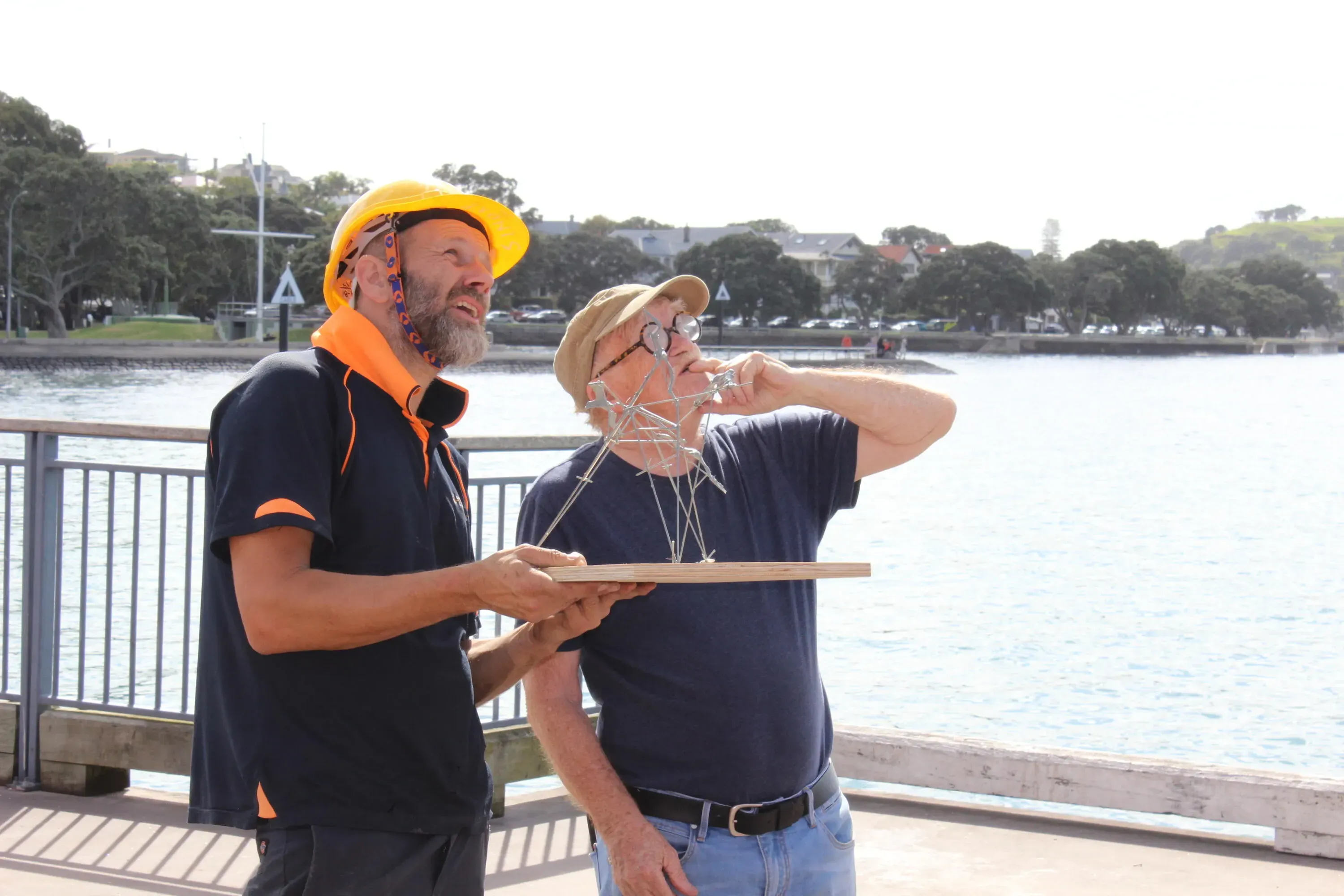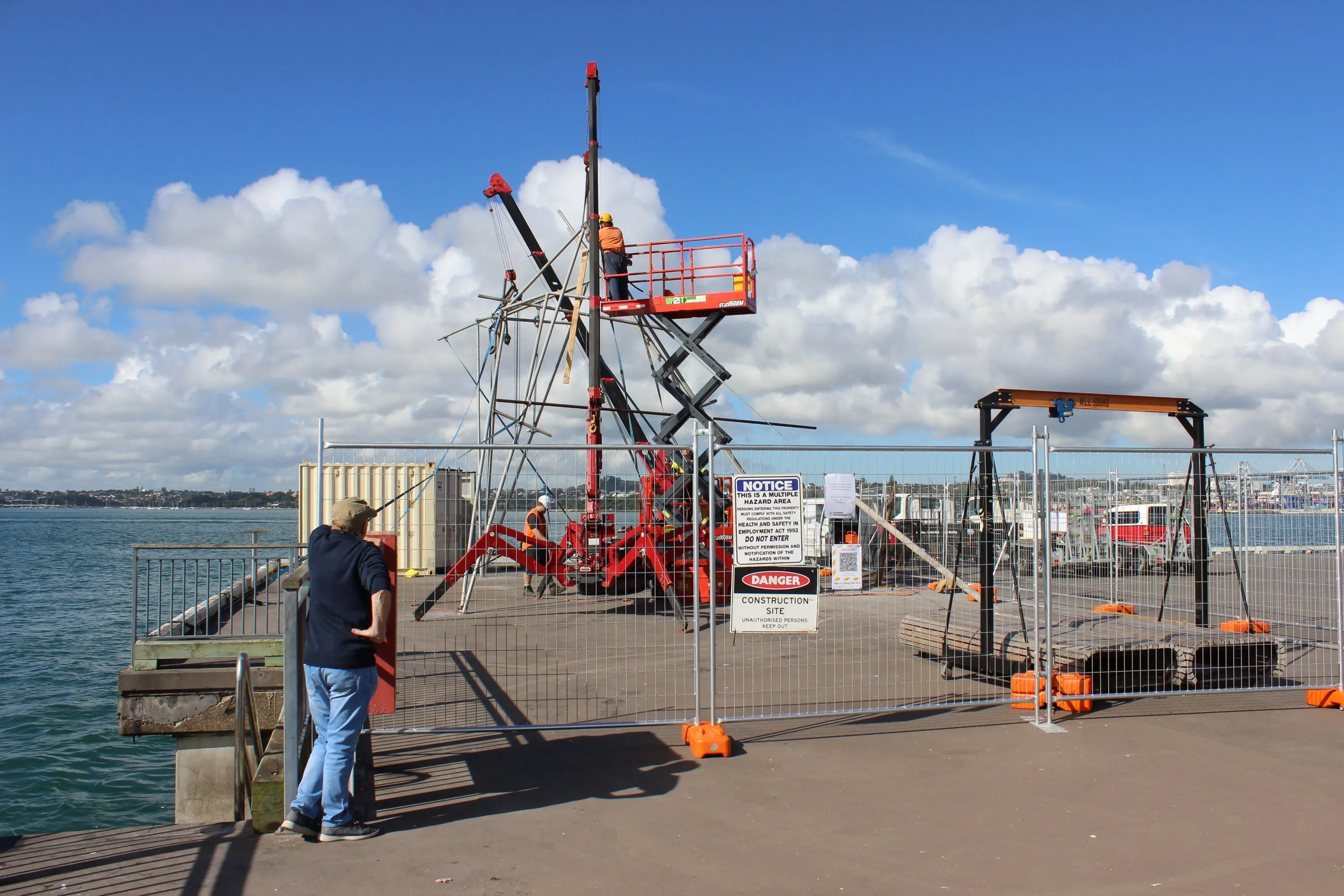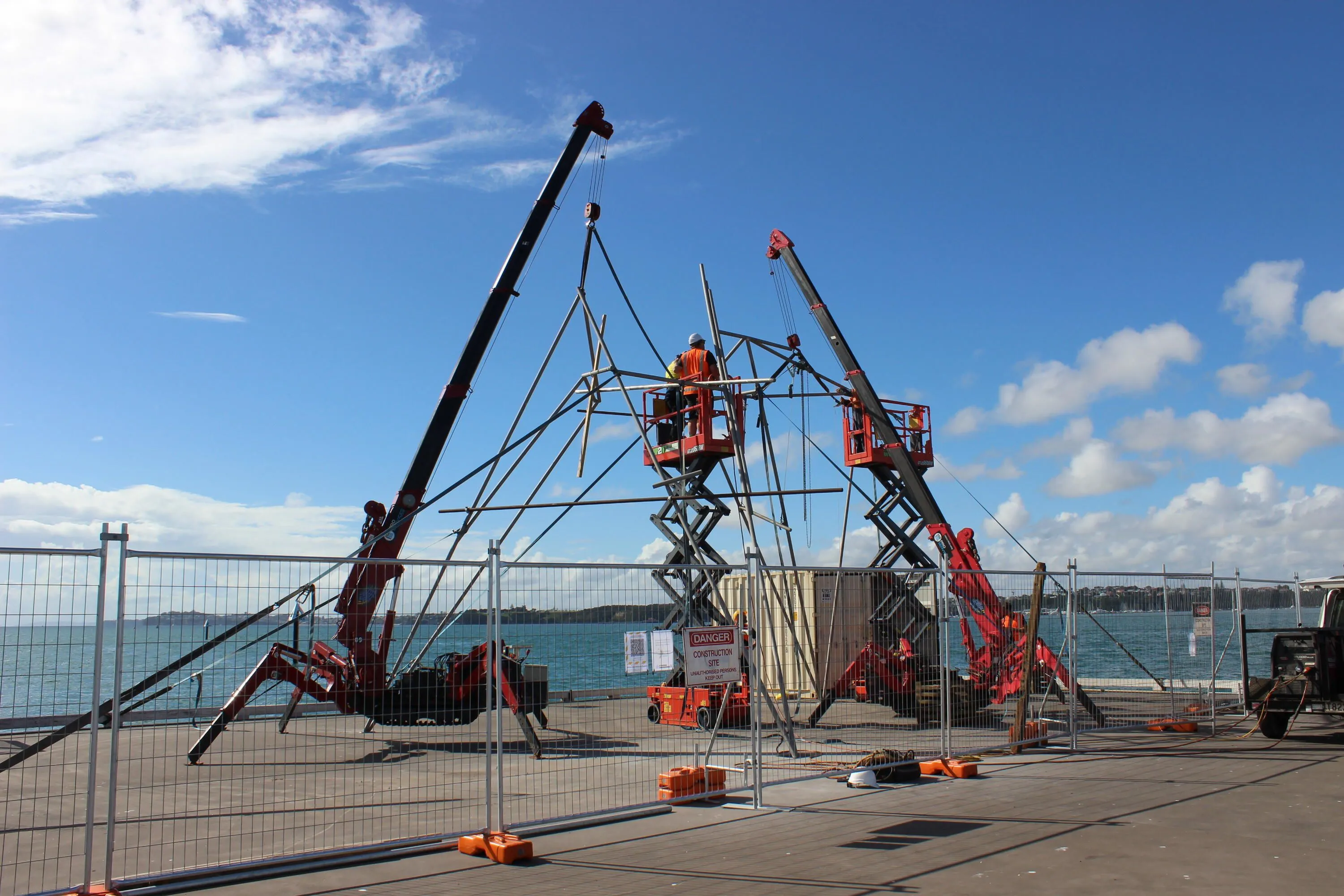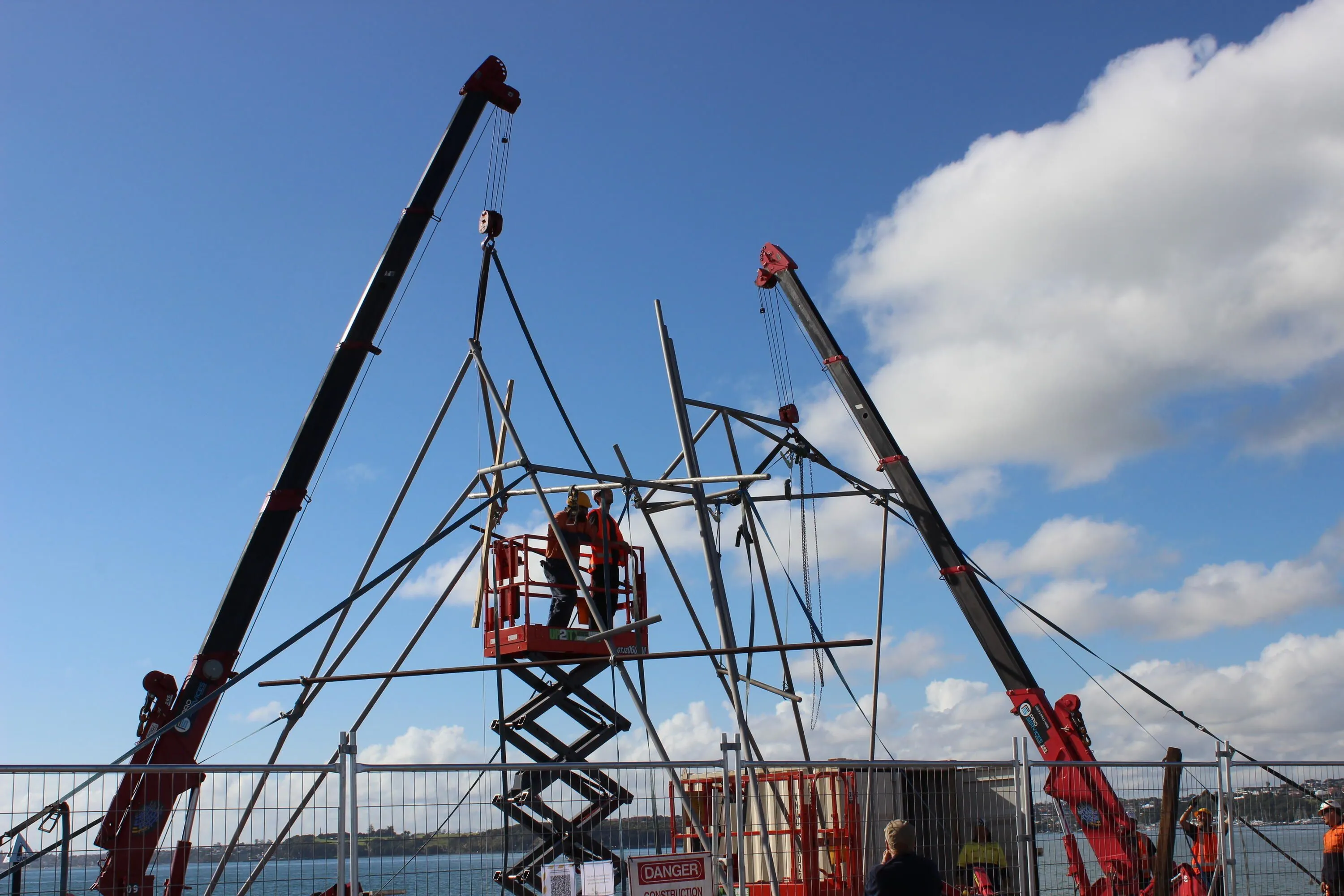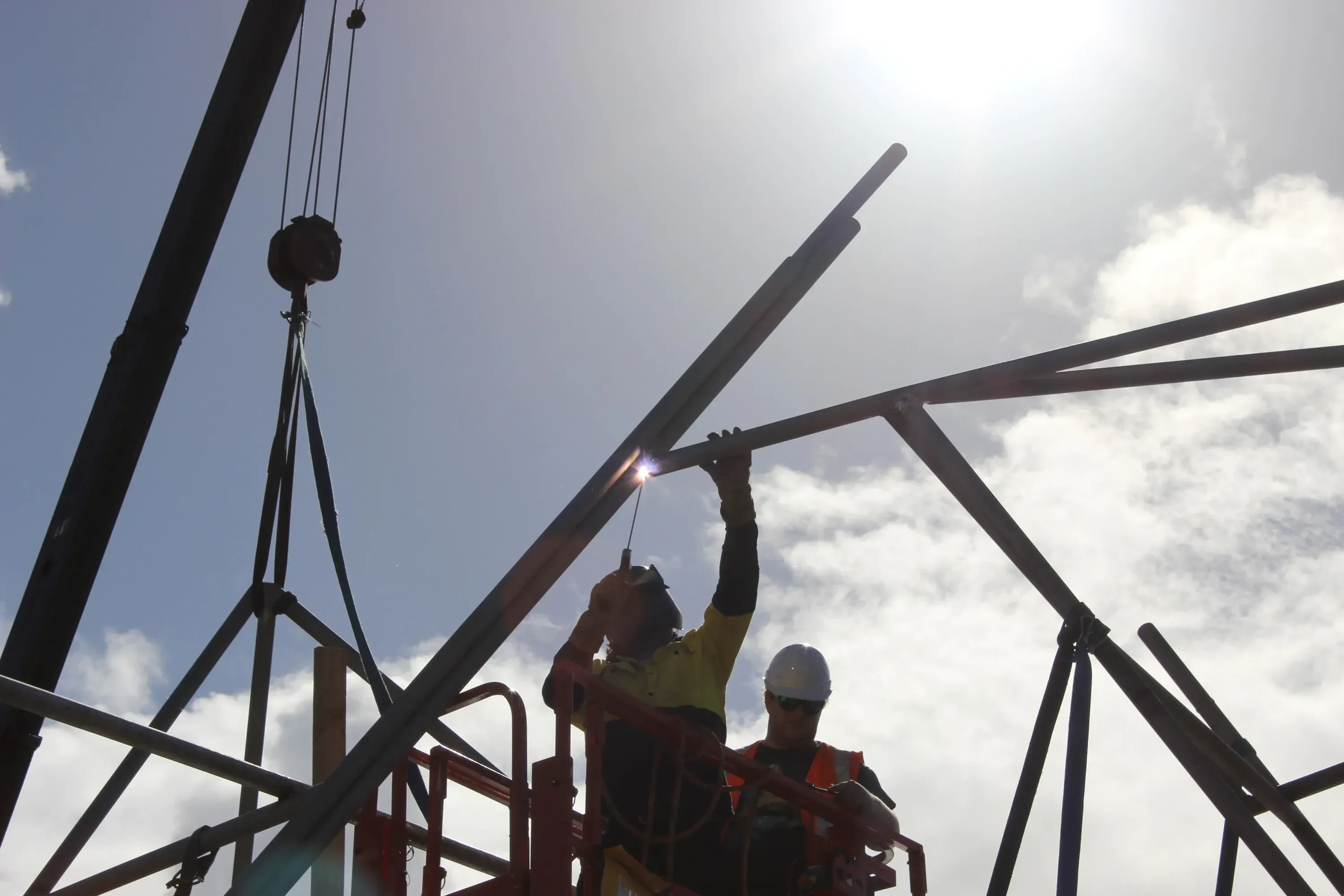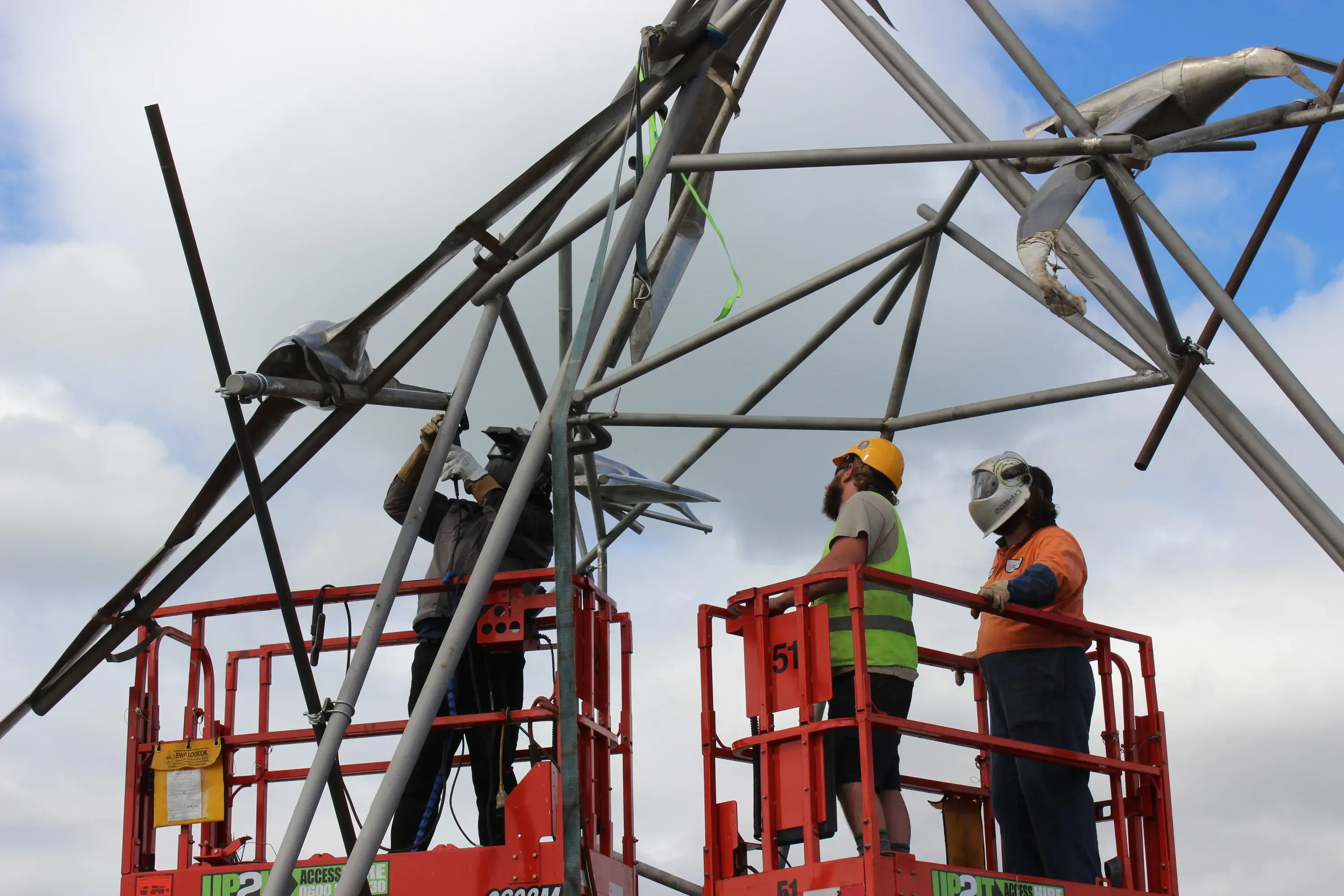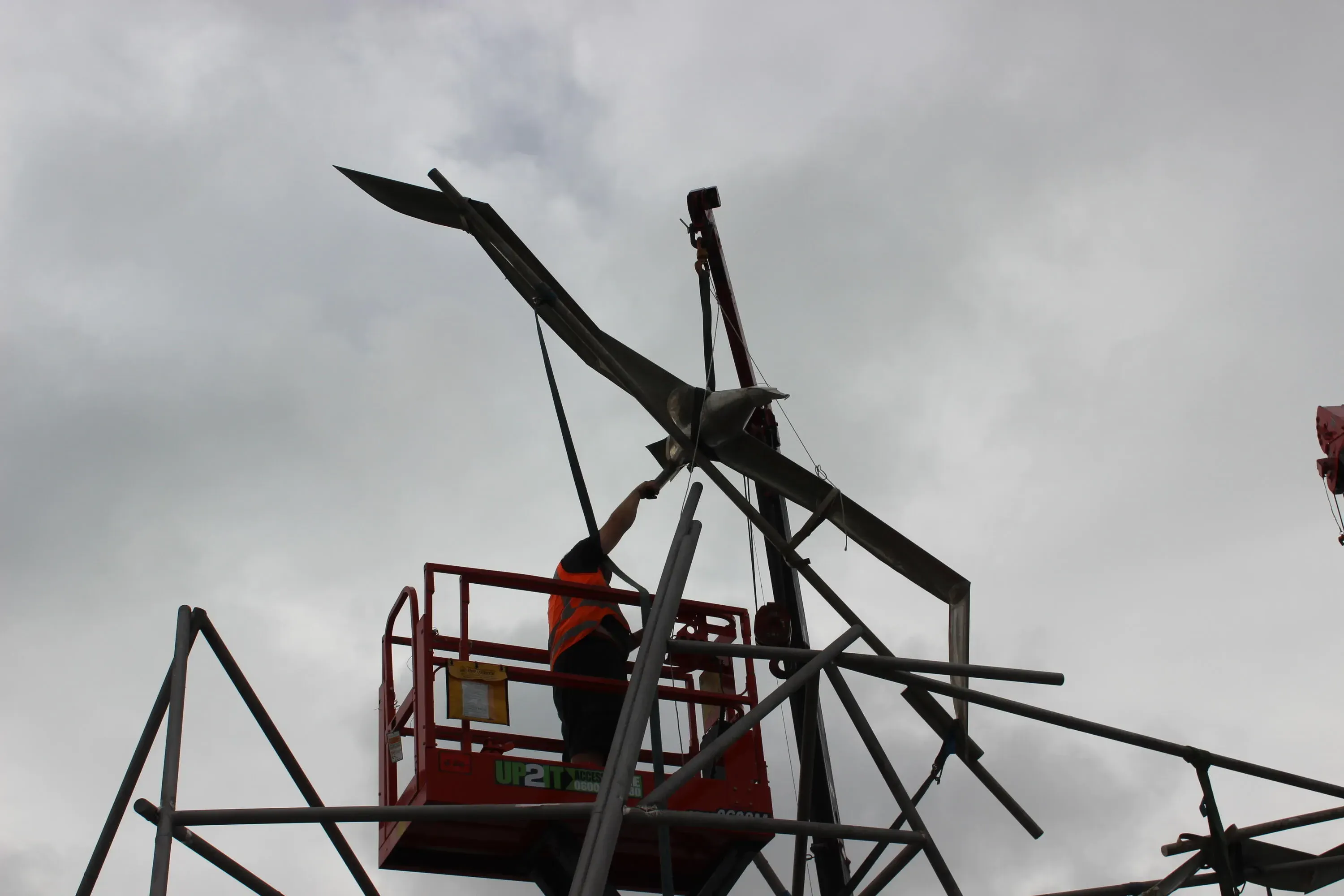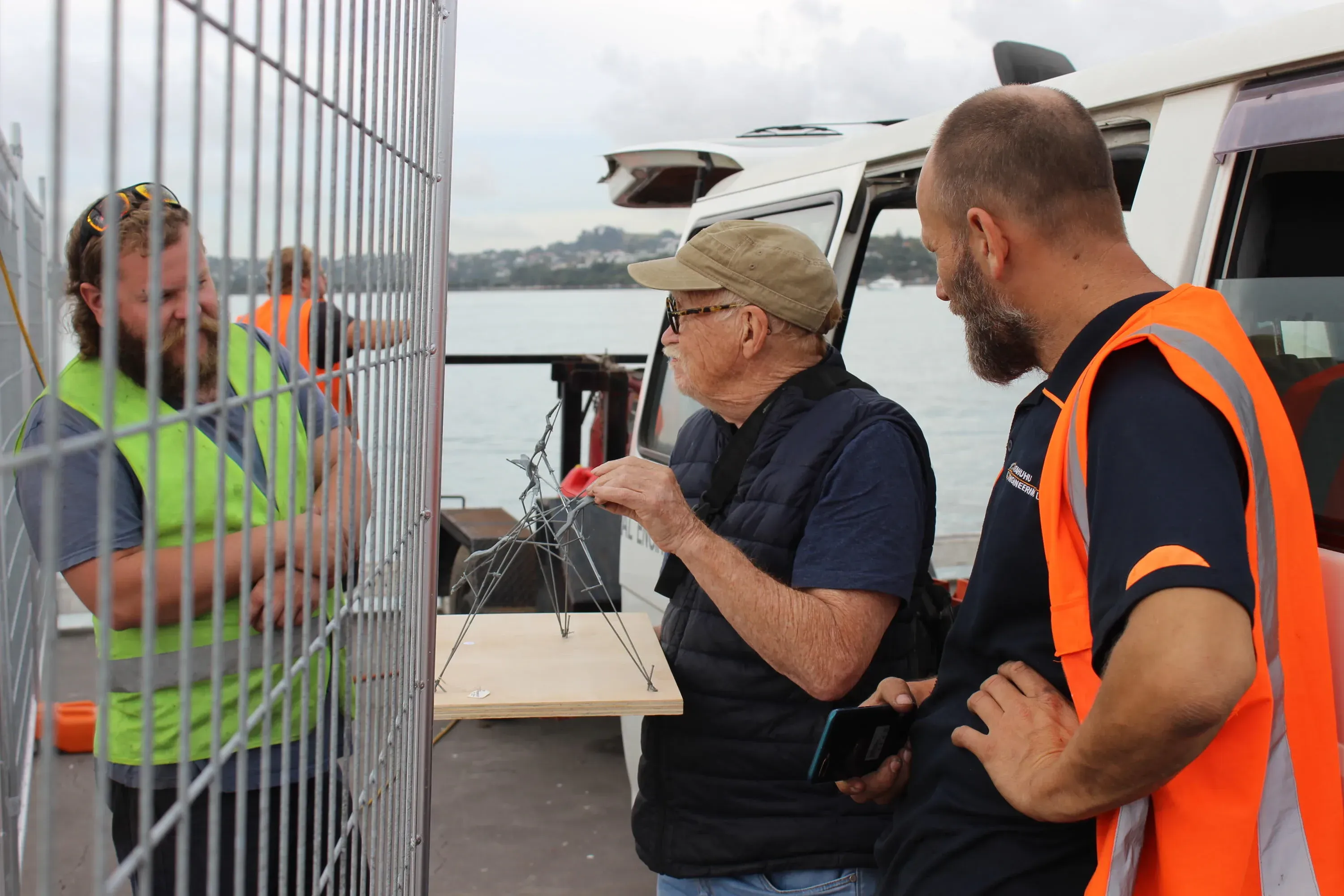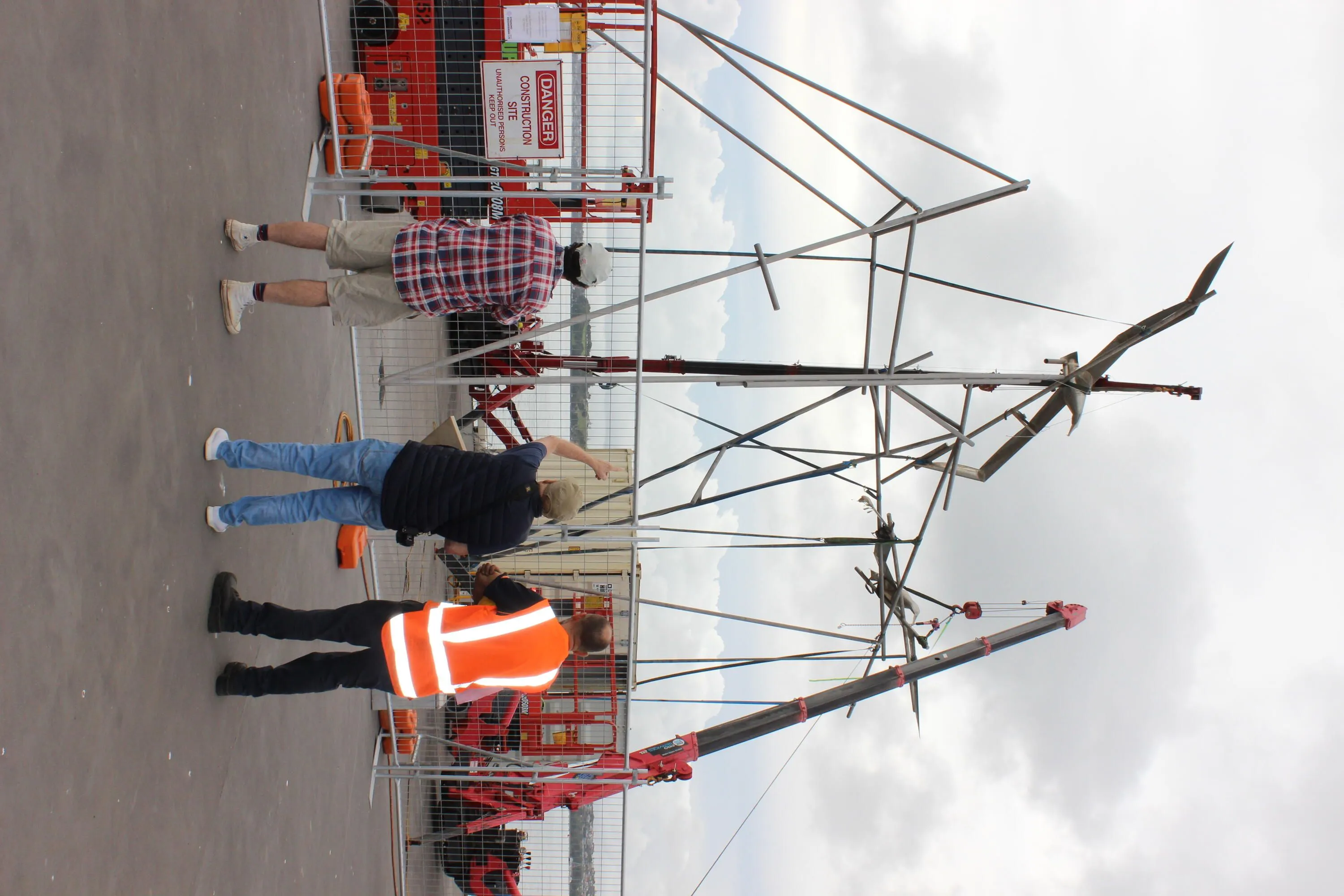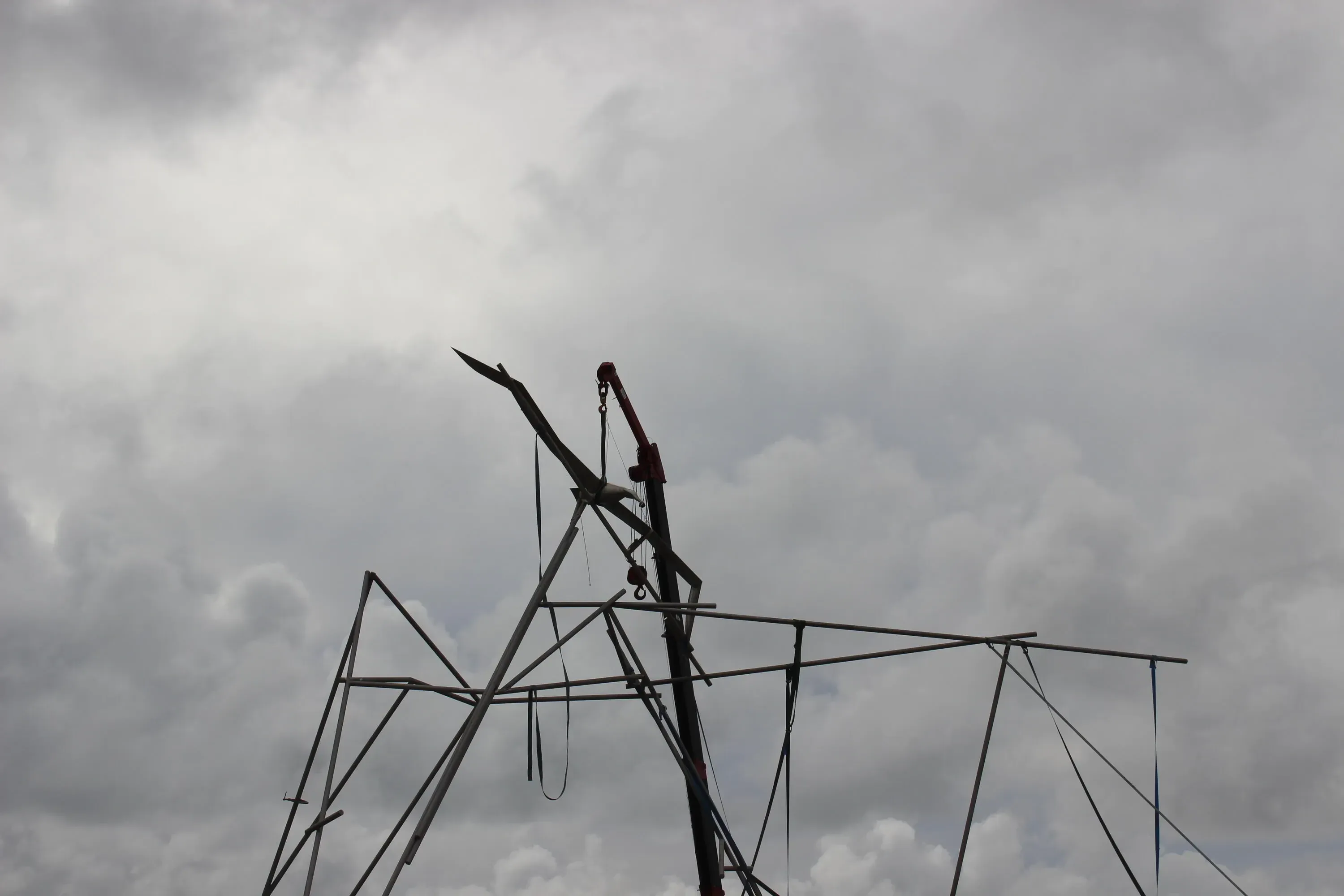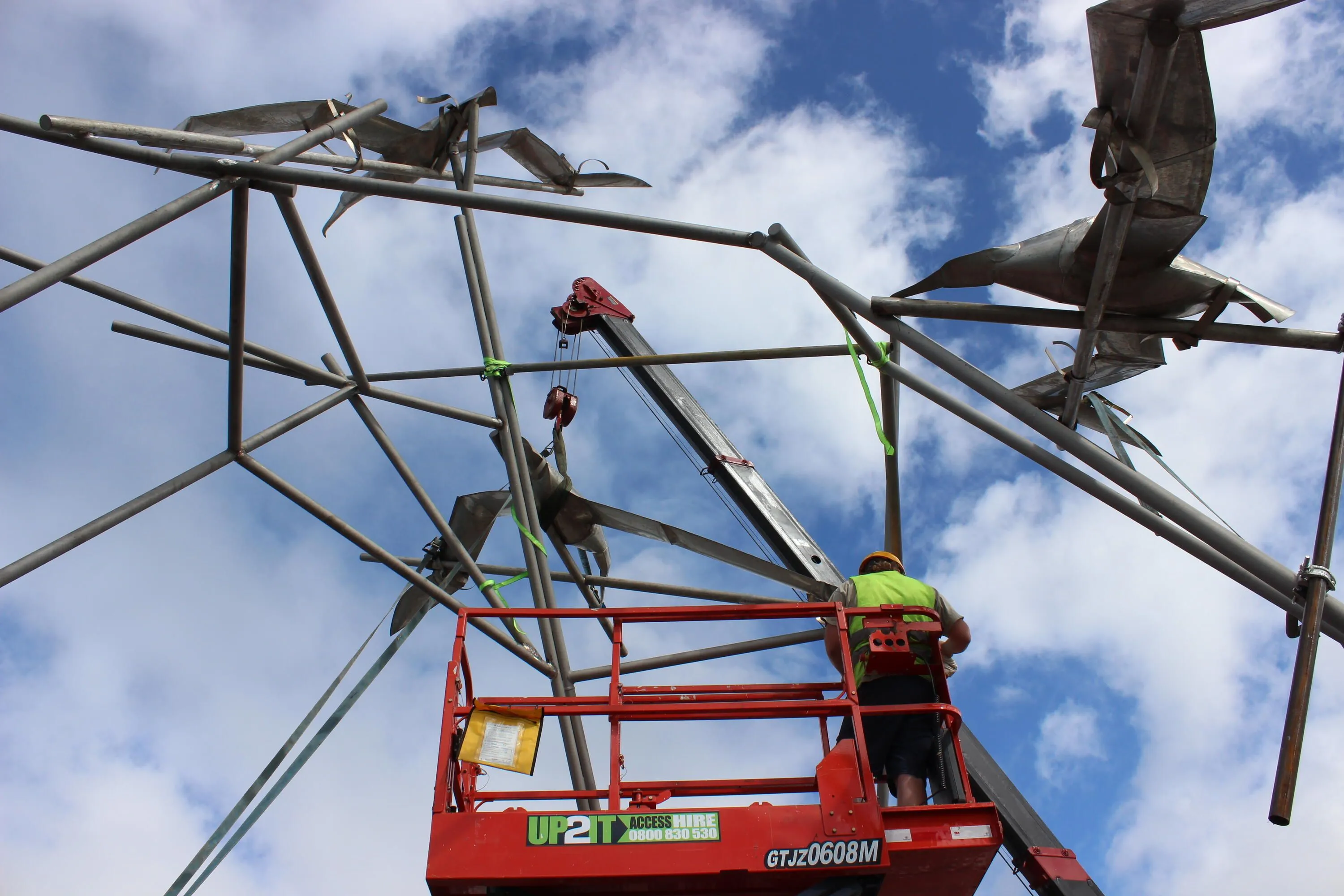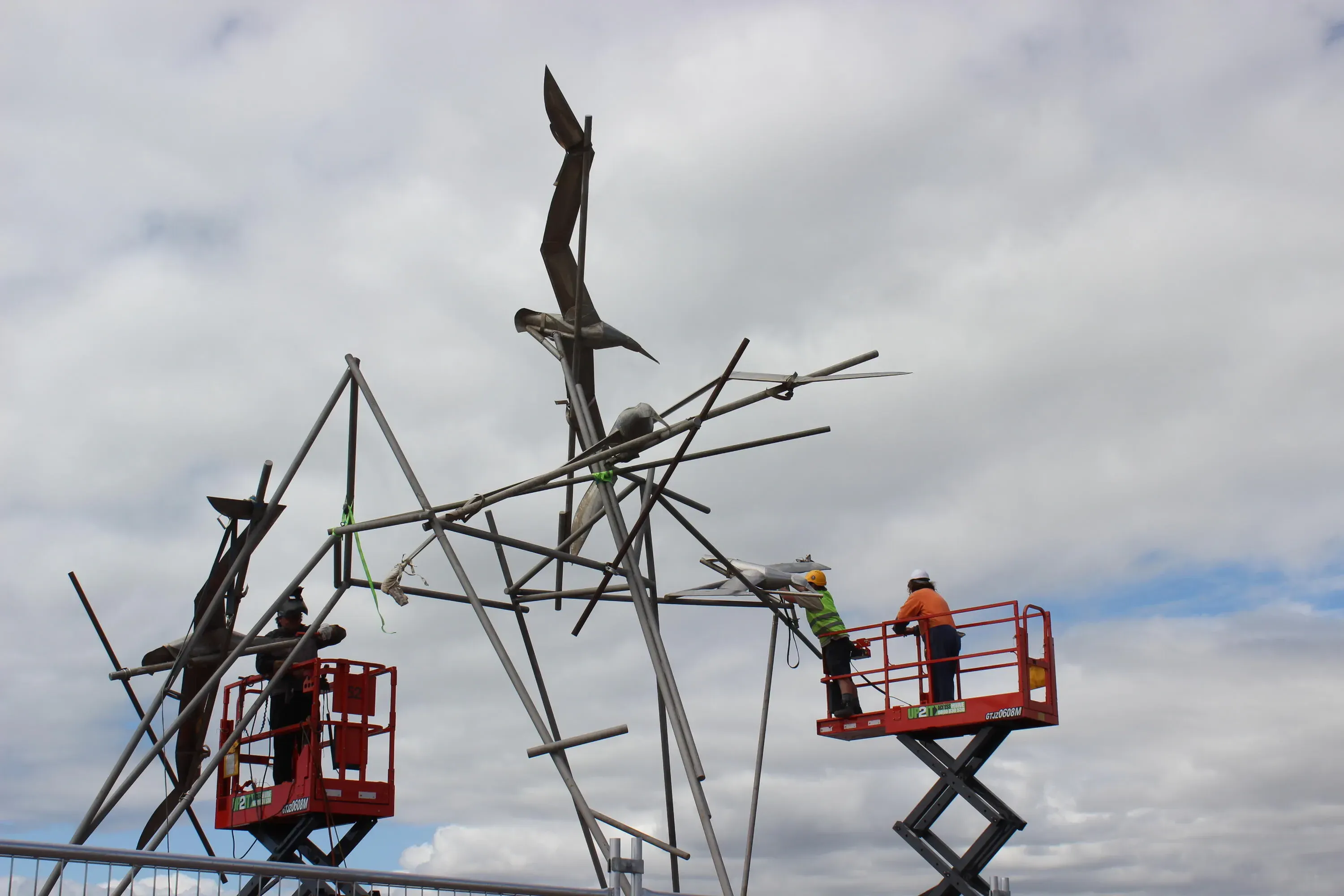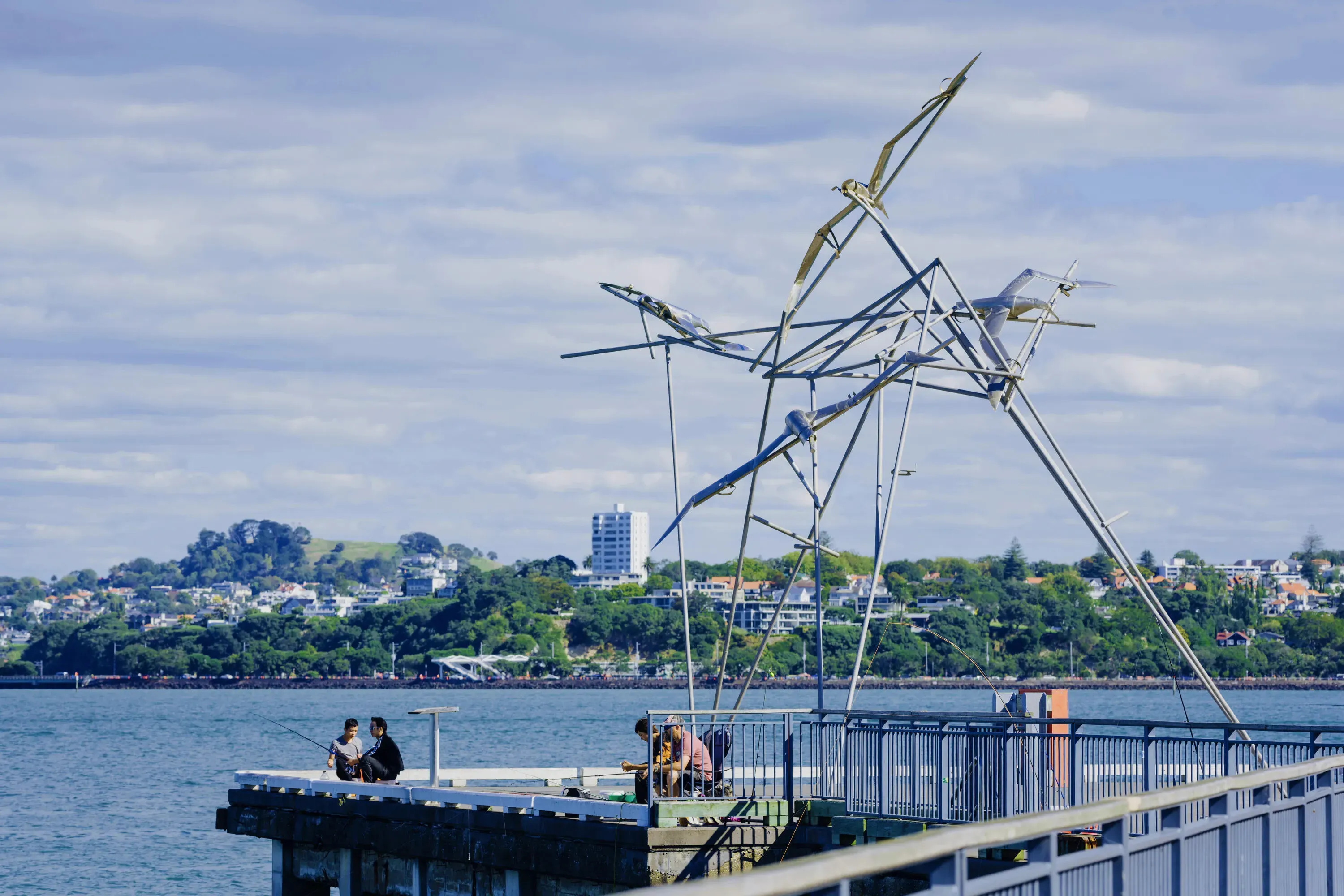Making Public Art Soar Again
Written by
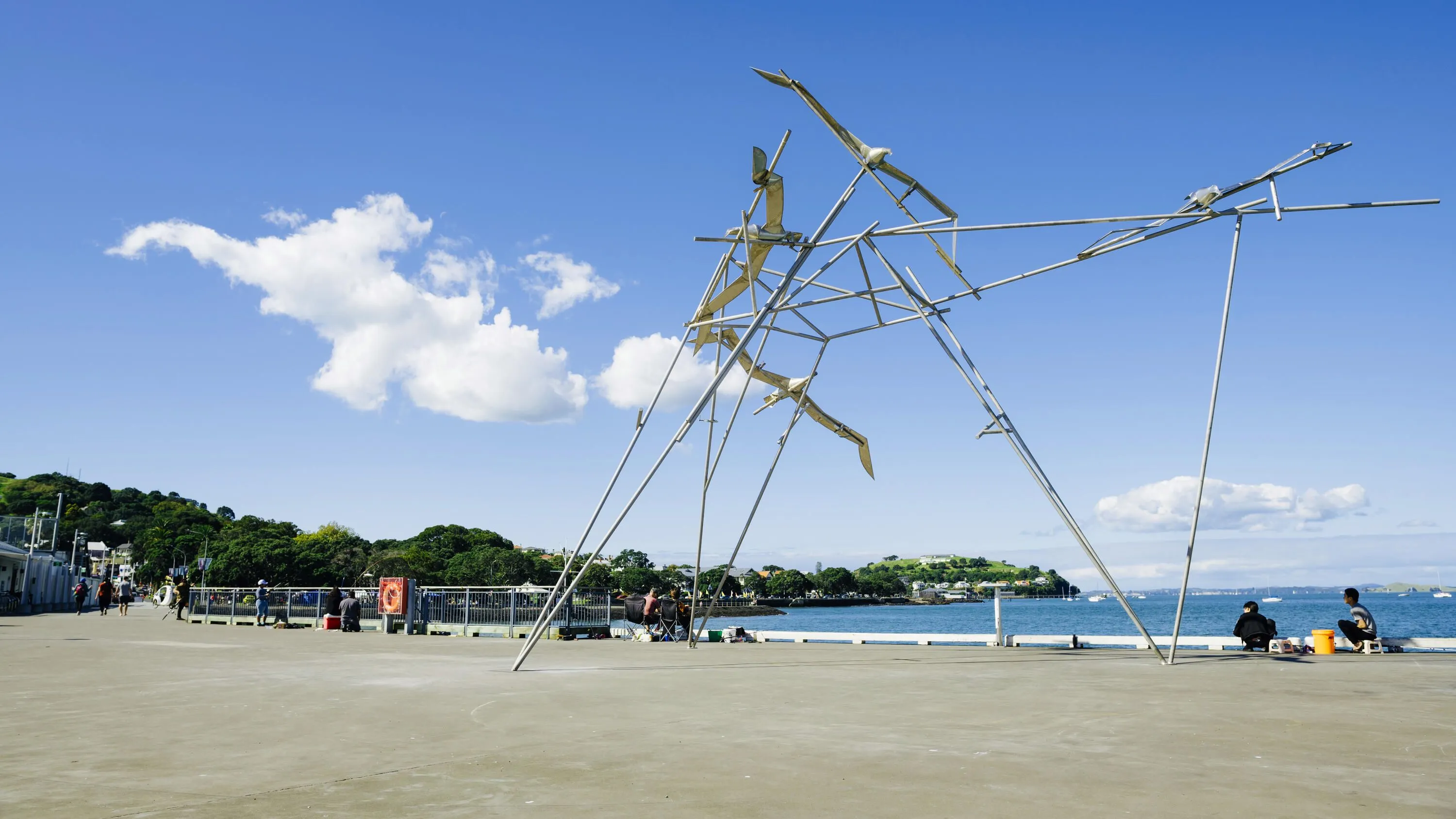
Greer Twiss has achieved so much in his accomplished career. One of the Arts Foundation’s Living Icons and part of the New Zealand Order of Merit, his work is admired throughout Aotearoa and internationally.
But there’s been something missing for the last seven years.
Finally, the wait to see his impressive sculpture Flight Support For Albatross is over, with its installation on Devonport’s Victoria Wharf completed during March.
“I’m very pleased to have it back, (it’s absence) has been like an albatross around my neck for a while. It goes back a long way,” the veteran sculptor states, before adding “good to do it before I die,” with a wicked chortle.
It’s been a substantial process from Auckland Council to bring this piece of art back into the public domain. And while it is Twiss’s work, he couldn’t make this reimagination of Flight Support For Albatross happen alone.
Originally located on Quay Street, its return to Tāmaki Makaurau’s shoreline was originally due to be erected in June last year before COVID and emergency budget reviews pushed back the project. While that’s been frustrating for all involved, Twiss explains, “I’ve been lucky, I’ve had some good people (working on the project). It’s taken a few years to work out where we were going to put it, which is no mean feat, finding the right site.”
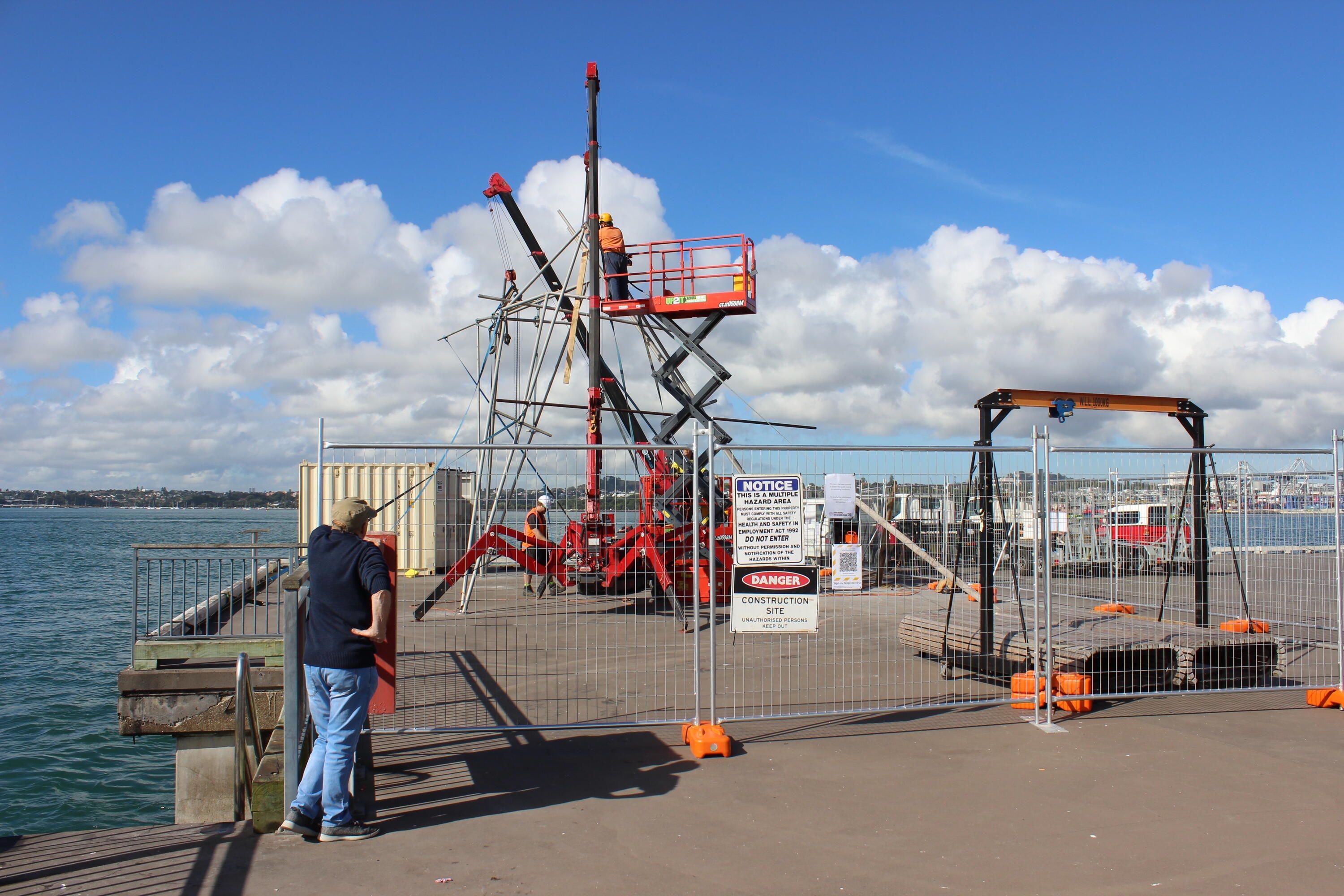
Artist Greer Twiss surveys the site. Photo; Terry Urbahn.
Man in the middle
Finding the balance of the vision of the artist and the needs of the engineers who put this substantial sculpture back together is Terry Urbahn, Auckland Council’s Arts and Culture Project Manager. He’s the man who needs to speak the languages of both parties, the conduit between the creative and the constructors.
“It is a process of compromise,” Urbahn laughs. “All the artists I’ve worked with do take responsibility to make sure large-scale sculptures are safe in the first place. It is a negotiation but the structures need to stand up and stay up. The engineers want it to look as good as possible, they’re open to suggestions and through the creative process, they learn things from the artist and vice versa.
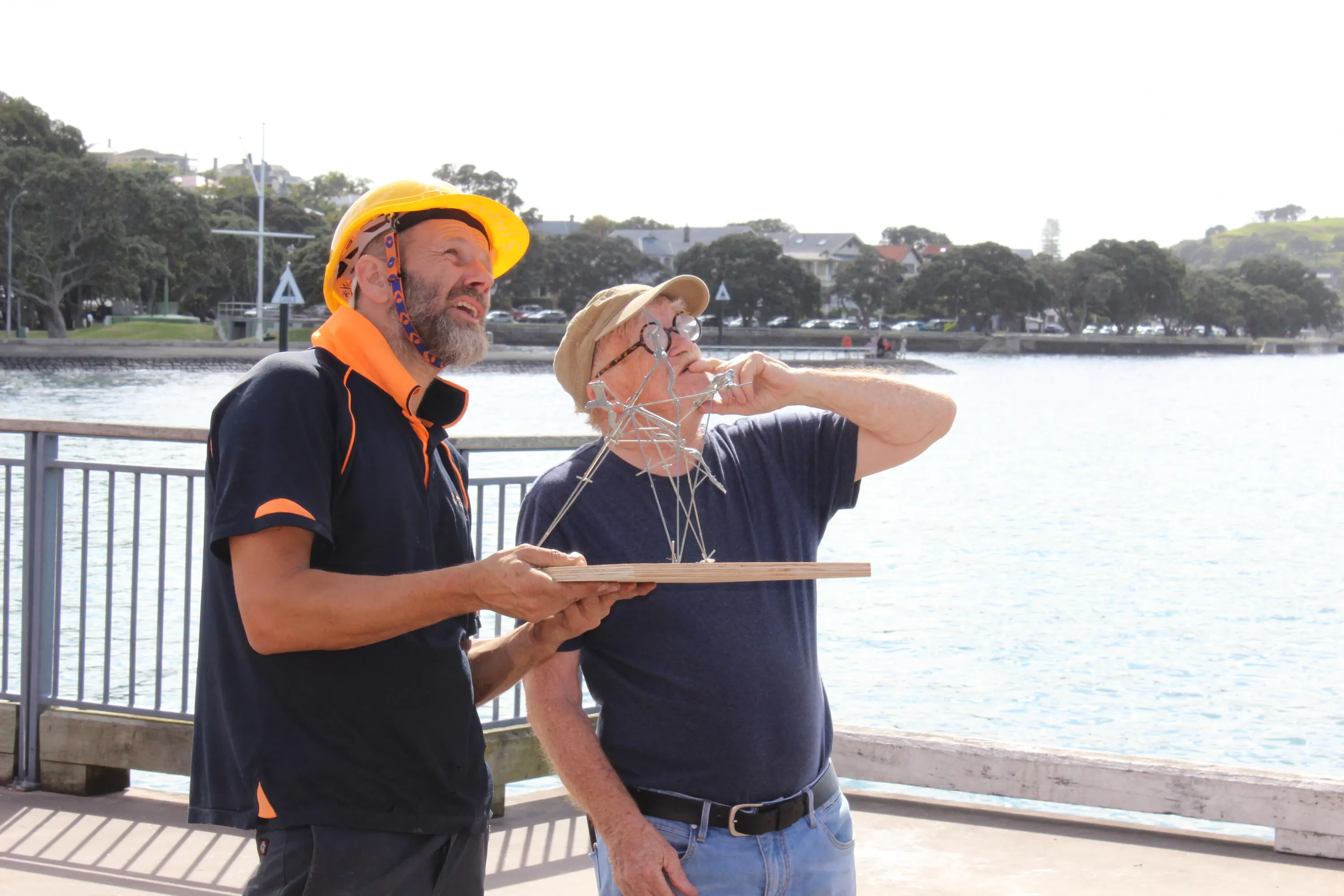
Twiss (right) discusses the progress with one of the installation team. Photo: Terry Urbahn.
“The majority of contractors I’ve worked with are in the construction realm and find these sorts of jobs pretty interesting and fascinating. They can be a little drawn out and difficult but they’re keen to be involved because it’s a little different and a bit of a challenge.”
Bringing Flight Support For Albatross out of storage and back to life required careful planning and discussion for all involved. Before even arriving on site, the framework was preassembled in pieces. Once trucked onto the wharf, the first week was spent lifting the four components of the frame, binding them together with clamps and other pipes before being welded into place.
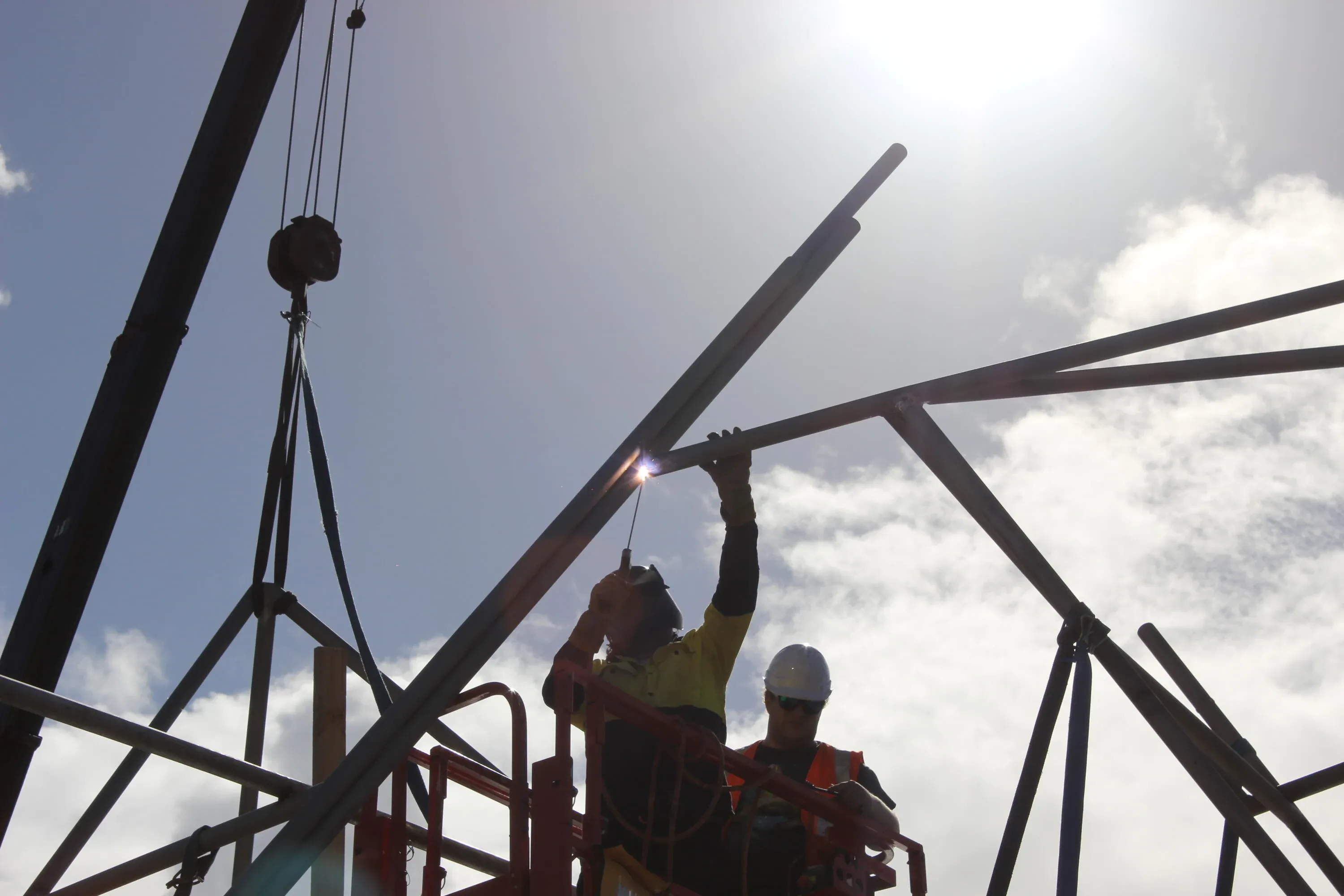
Welding underway on Flight Support For Albatross. Photo: Terry Urbahn.
“The frame is over 9 and a half metres tall, the framework has some quite complex bracing struts throughout the whole structure that hold it together. It’s anchored to the wharf in three places, it’s like a big tripod with various pipe attachments to keep it quite rigid,” Urbahn outlines.
A second chance
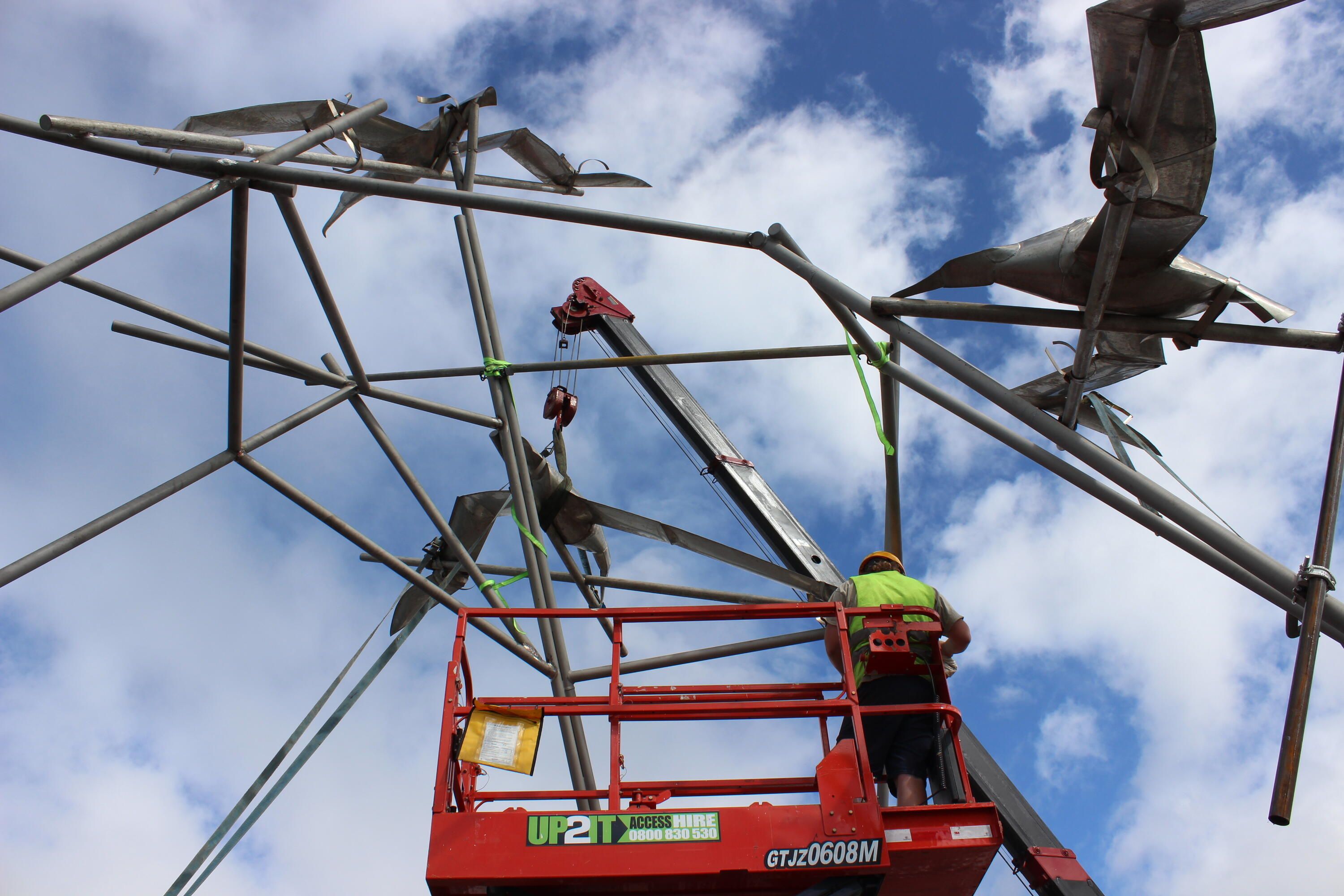
Cranes lifting the albatross into place. Photo: Terry Urbahn.
One of the benefits of the reinstallation for Twiss is he sees it as a “second chance” to realise the initial hopes for his creation. The placement of the albatross on the structure has been paramount to achieving this.
Twiss has been impressed with the collaborative nature of the process once on site. “Absolutely, it’s been good. There have been moments (laughs) but working with the fabricators and those doing the physical work, I’ve enjoyed that.
“It’s a different work now because it’s on a different site, it has different dynamics going on and I could play with it in a different way.”
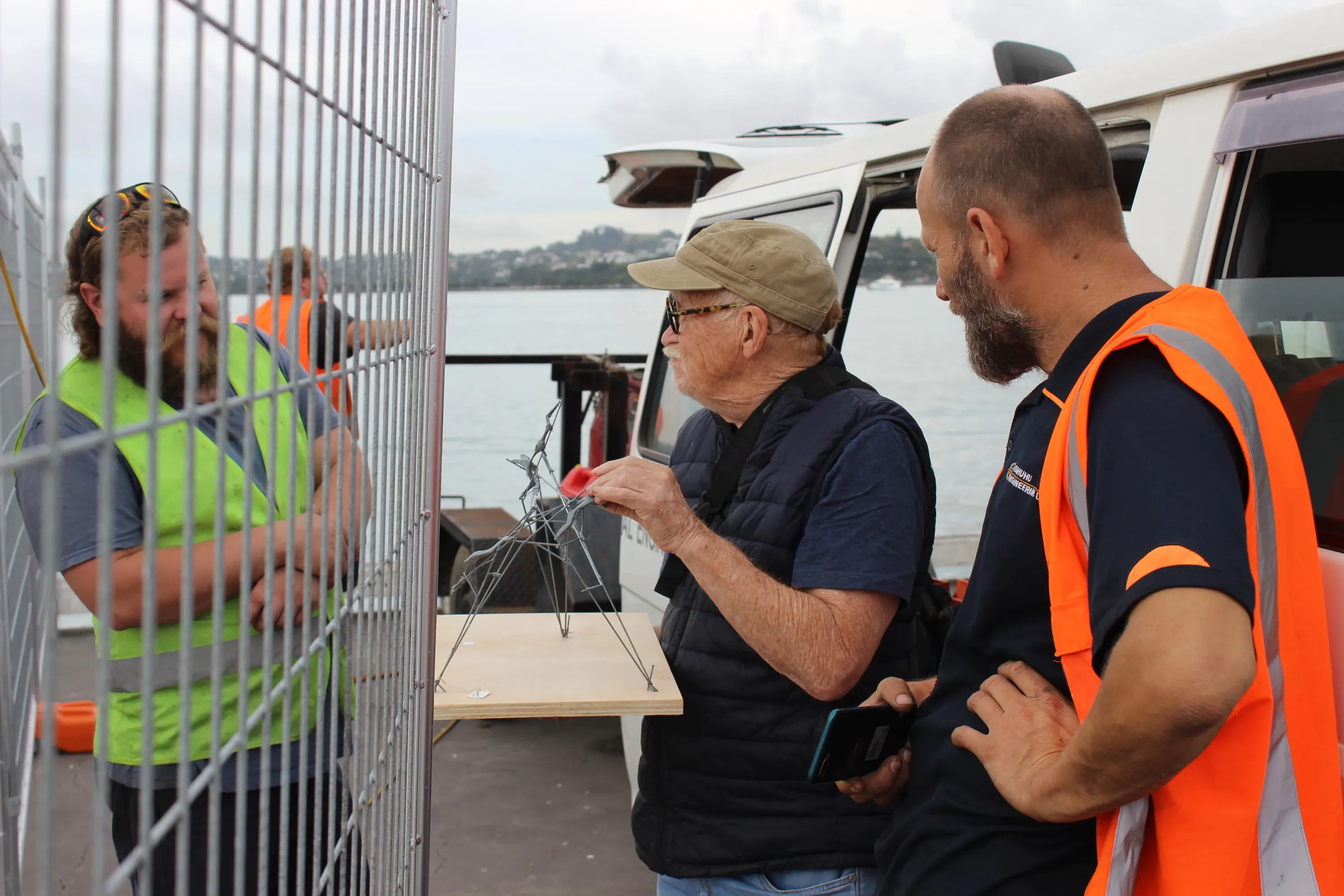
Discussion intensifies as the project progresses. Photo: Terry Urbahn.
Urbahn elaborates, “the proportion between the wingspan of the birds and the weight of the birds in relation to the structural pipes looks really good. You walk down the main street of Devonport and there’s this great view shaft right down to the wharf, where you can see the glinting stainless steel of the bird high up in the air.”
This has been part of a continuing labour of love for Urbahn, who plays an important role in bringing so many of Auckland Council’s public artworks to fruition. An art school graduate and an artist in his own right, he’s spent his entire working career ensuring creativity reaches a wider audience.
“I’ve worked in art galleries and museums, big projects like when Te Papa was being built. What has allowed me to specialise in the visual arts is I’ve managed to build a rapport with the artists I’m working with, I can see their point of view. My role as project manager is the interface between the contractors and the artists and making sure at the end of the project everyone has achieved what they have to achieve, played their part in the project and making sure it happens - not always on time because of various things (laughs).”
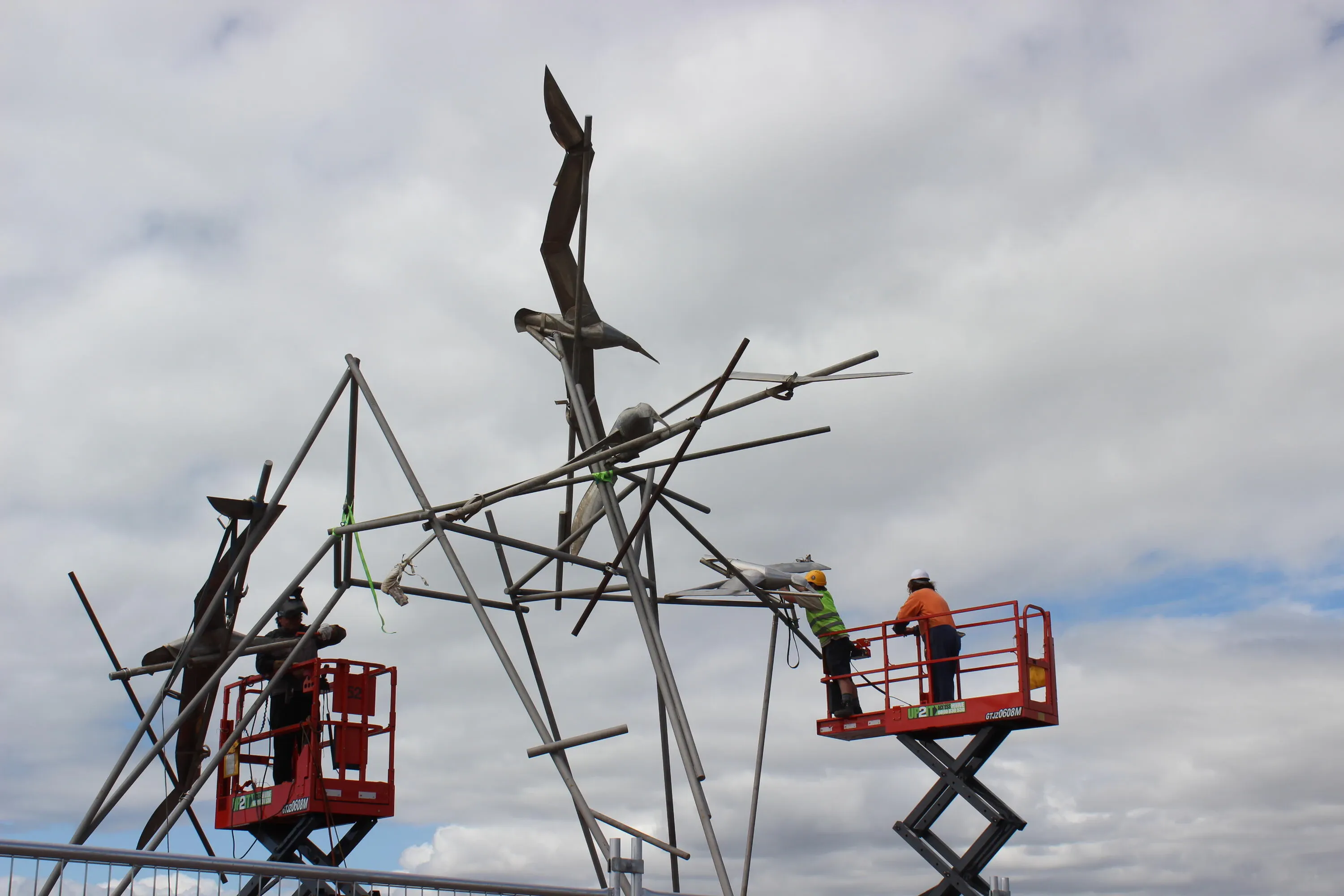
Finishing touches in Devonport. Photo: Terry Urbahn.
Twiss is thrilled to have a location where his work can have - and become - and identity. It can be viewed from multiple points on the wharf and from the ferries.
“It’s quite a complicated structure, I enjoy the deviations that go on within it and the kinetic qualities of the work as you’re walking around it. You see changes in the birds and the structure that’s integrated between them... It’s like taking your eye for a walk.
“I believe in having artworks in public venues, I think that’s the value of them, to be accessible to people. I see that as very important.”
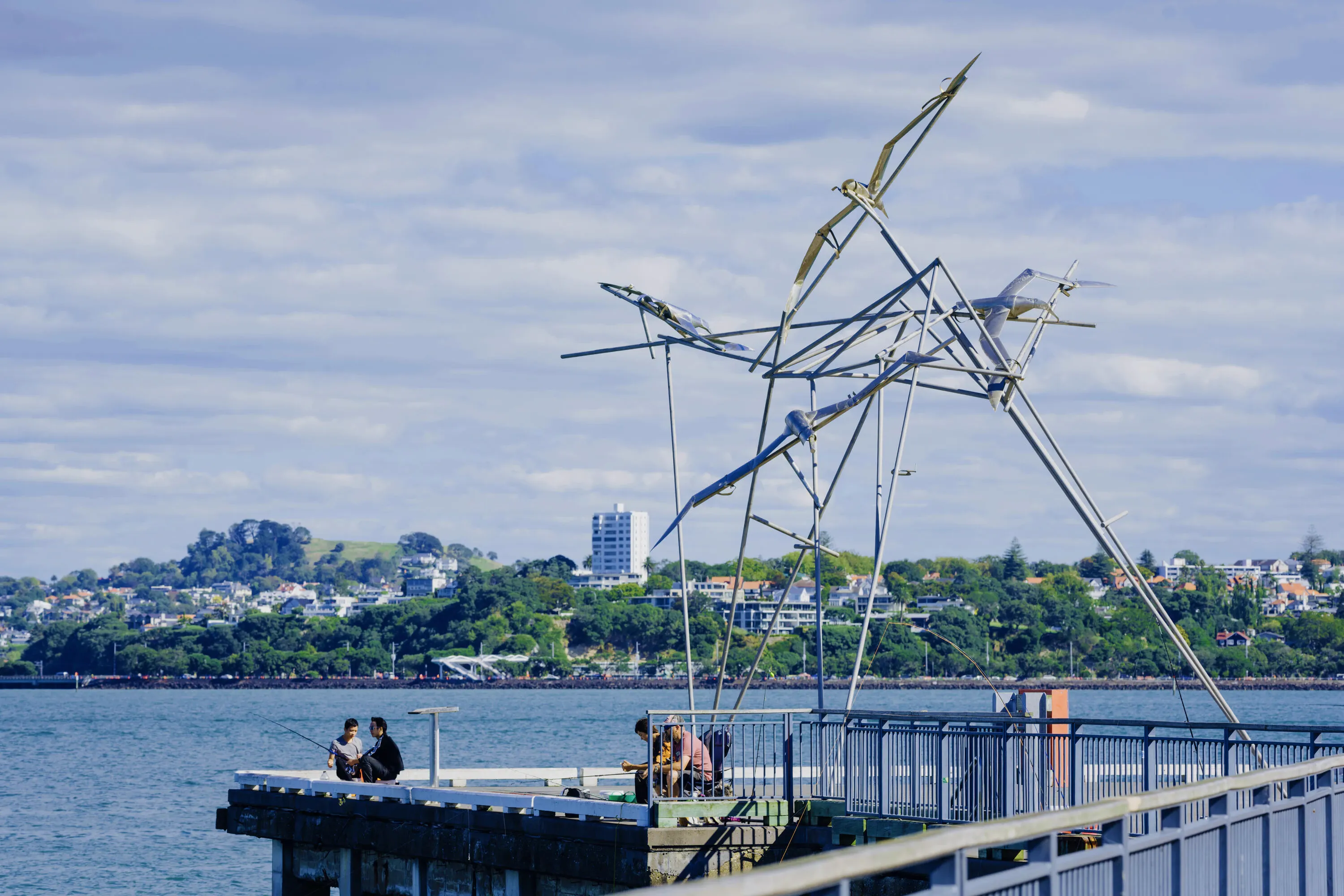
Flight Support For Albatross in all its glory. Photo: David St George.
Written in partnership with Auckland Council - you can find out more about Flight Support For Albatross and other works of art around Tāmaki Makaurau at aucklandpublicart.com
